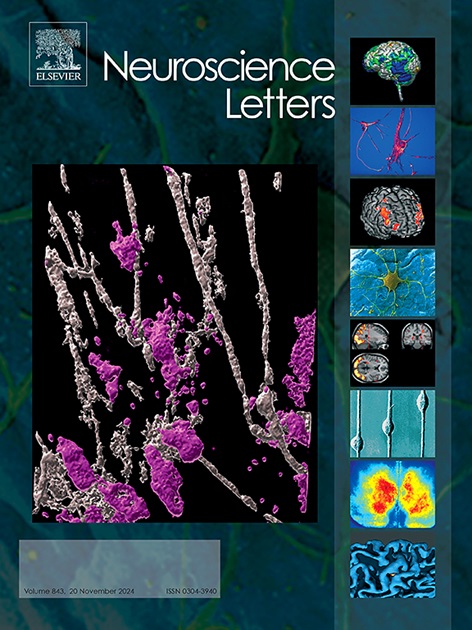Ventral tegmental area functional connectivity as a marker of resilience to sleep deprivation
IF 2
4区 医学
Q3 NEUROSCIENCES
引用次数: 0
Abstract
Objective
Sleep deprivation (SD) impairs cognitive functions like attention and reaction speed, though some individuals exhibit a trait-like resilience to these effects. To explore the neurobiological basis of this resilience, we quantified cognitive performance using the Percentage Reaction Speed Change (PRSC) from the psychomotor vigilance test (PVT). We then examined the relationship between PRSC and ventral tegmental area (VTA) functional connectivity during 28 h of SD.
Methods
Forty-four healthy adults (21 females; age = 25.4 ± 5.6 years) underwent a resting-state functional MRI (rs-fMRI) to examine whole-brain VTA connectivity. Within the same week, participants completed a 28-hour SD protocol, during which PVT performance was measured. We examined the association between VTA connectivity and PRSC, with a focus on connections to the Primary Visual Cortex (V1) and Supplementary and Cingulate Eye Field (SCEF).
Results
Greater VTA connectivity with the V1 and SCEF was associated with higher PRSC, suggesting that stronger VTA connectivity to these visual processing and cognitive control regions supports cognitive resilience to SD.
Conclusion
The VTA contributes to cognitive resilience during sleep deprivation through its connectivity with visual and cognitive control regions. These findings provide insight into neural mechanisms that help preserve cognitive performance under SD.
腹侧被盖区功能连通性作为睡眠剥夺恢复能力的标志。
目的:睡眠剥夺(SD)会损害认知功能,如注意力和反应速度,尽管有些人对这些影响表现出类似恢复力的特征。为了探索这种弹性的神经生物学基础,我们使用来自精神运动警觉性测试(PVT)的百分比反应速度变化(PRSC)来量化认知表现。然后,我们在SD的28 h内检测了PRSC与腹侧被盖区(VTA)功能连通性之间的关系。方法:健康成人44例(女性21例;年龄 = 25.4 ± 5.6 岁)进行静息状态功能MRI (rs-fMRI)检查全脑VTA连通性。在同一周内,参与者完成了28小时的SD方案,在此期间测量PVT表现。我们研究了VTA连通性和PRSC之间的联系,重点研究了与初级视觉皮层(V1)和补充扣带视野(SCEF)的联系。结果:VTA与V1和SCEF的连通性越强,PRSC越高,表明VTA与这些视觉加工和认知控制区域的连通性越强,支持对SD的认知弹性。结论:睡眠剥夺时,VTA与视觉和认知控制区域的连通性有助于认知恢复。这些发现提供了对SD下帮助保持认知表现的神经机制的深入了解。
本文章由计算机程序翻译,如有差异,请以英文原文为准。
求助全文
约1分钟内获得全文
求助全文
来源期刊

Neuroscience Letters
医学-神经科学
CiteScore
5.20
自引率
0.00%
发文量
408
审稿时长
50 days
期刊介绍:
Neuroscience Letters is devoted to the rapid publication of short, high-quality papers of interest to the broad community of neuroscientists. Only papers which will make a significant addition to the literature in the field will be published. Papers in all areas of neuroscience - molecular, cellular, developmental, systems, behavioral and cognitive, as well as computational - will be considered for publication. Submission of laboratory investigations that shed light on disease mechanisms is encouraged. Special Issues, edited by Guest Editors to cover new and rapidly-moving areas, will include invited mini-reviews. Occasional mini-reviews in especially timely areas will be considered for publication, without invitation, outside of Special Issues; these un-solicited mini-reviews can be submitted without invitation but must be of very high quality. Clinical studies will also be published if they provide new information about organization or actions of the nervous system, or provide new insights into the neurobiology of disease. NSL does not publish case reports.
 求助内容:
求助内容: 应助结果提醒方式:
应助结果提醒方式:


